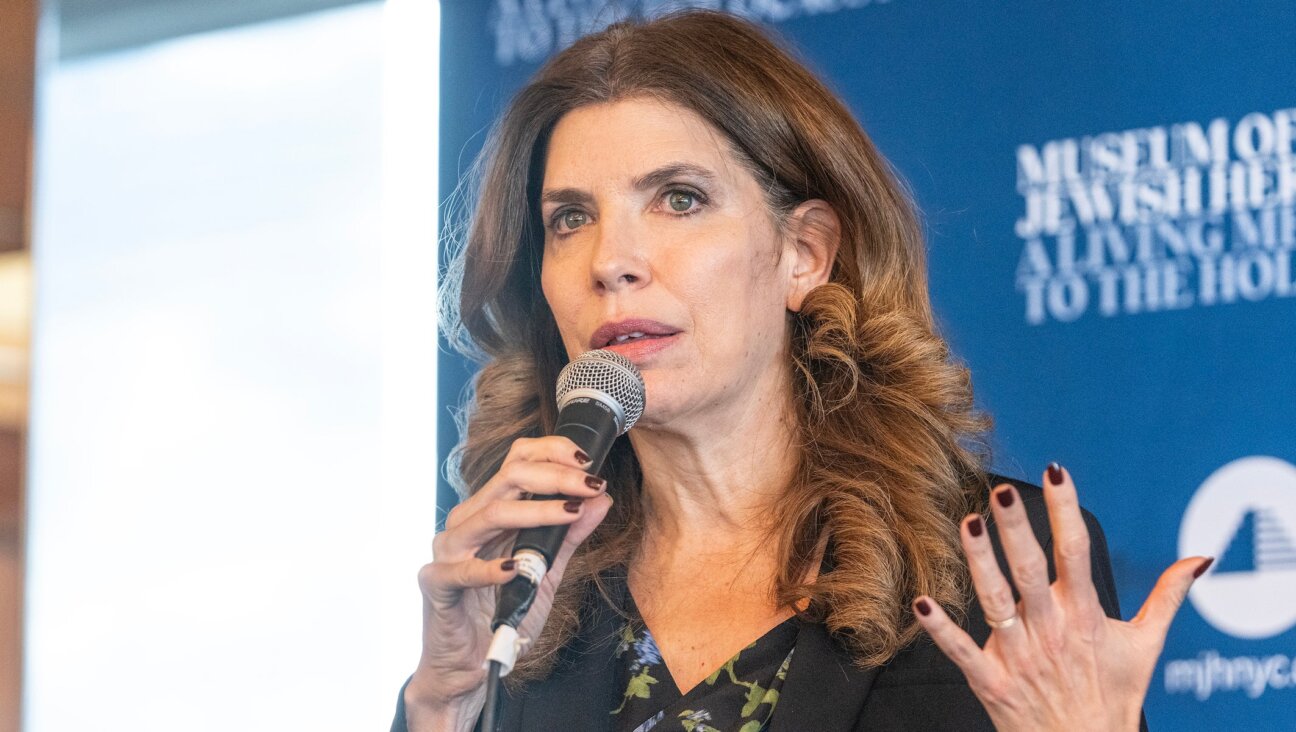When a Toy Is More Than Child’s Play

Graphic by Angelie Zaslavsky
Toronto isn’t the first place that comes to mind when you think of Pharrell Williams, the peripatetic Grammy winner and Daft Punk collaborator.
But this spring, Williams’ name adorns the marquee of the city’s Design Exchange museum. And it’s Shauna Levy, the museum’s new director, who’s responsible for the coup.
“THIS IS NOT A TOY,” a blockbuster show of toys as art, includes work from Williams’ personal collection, and from artists around the world who blur art, design and street culture. The exhibit, whose centerpiece is a $3 million, diamond-encrusted sculpture by Japan’s Takashi Murakami, is Levy’s latest swipe at clearing the dust from what had been an esoteric gallery with a wonky reputation; last year, she shook up the staid DX with a retrospective of French shoe guru Christian Louboutin.
A Montreal native, Levy founded Toronto’s popular Interior Design Show, which she sold to Chicago’s Merchandise Mart Properties in 2012. “I started to feel restless for a great big new challenge,” she told the Forward from Toronto. “Days after I acknowledged this to myself, I was contacted by a recruiter on behalf of the Design Exchange board. There is something to be said for putting it out there.”
Michael Kaminer: You’ve scored big with Pharrell Williams as guest curator for “This Is Not a Toy.” How did you get him?
Shauna Levy: When I first started to think about how to manifest the new direction of the DX, I was immediately reminded of a talk that Williams participated in during Design Miami several years ago. His ability to seamlessly segue in conversation from luxury fashion and furniture brands to street culture and music to contemporary art personified where I wanted to take the Design Exchange.
Months into the development of the exhibition concept, a mutual friend introduced me to Pharrell through his business manager. Not long thereafter, we met Pharrell in his home. He spoke intelligently yet effortlessly about his art collection once again segueing from music to art to fashion to street culture and back again; we discussed the foundation of his collecting, the history of collaborations with artists like KAWS, as well as which of his pieces he would loan to us for the show.
“Toy” seems like the kind of show that would open in NYC, LA or London. It says a lot about Toronto that it’s originating here. What’s the biggest misconception people outside the city have about TO?
Sadly unbeknownst to some, Toronto is a hotbed for creativity. We are well-read, well-traveled, and well-exposed on so many levels. Where we do have some work to do — is to learn how to celebrate our own.
Since you took over the DX, you’ve been charged with changing the ship’s direction, so to speak. What had the DX had been doing versus what you want it to be doing?
The Design Exchange was established almost 25 years ago as a not-for-profit registered charity mandated to promote design on both a consumer and industry level. In 2012, the Board of Directors decided that it was time to assess what the future could look like. It was agreed that moving forward, the institution should focus on being a design museum offering programming with broad public appeal.
DX exhibitions now cover design disciplines including fashion, architecture, interior and industrial design, digital design and more, by presenting designers, products, projects or themes that have wide appeal and reflect popular contemporary culture. Next year, we’ll present “The Politics of Fashion/ The Fashion of Politics,” guest-curated by [Jewish] Canadian fashion icon Jeanne Beker.
I’ve heard heads of Jewish cultural institutions in Toronto talk about an uptown/downtown divide — that is, people outside the downtown core tend to have more conservative tastes. Does that apply to an institution like yours?
That’s an interesting question. I like to think of design as a psychographic rather than a demographic. For example, an exhibition like “THIS IS NOT A TOY” appeals as much to serious contemporary art collectors who may live in the suburbs as hip young kids interested in hip hop and street culture living downtown. I also think that given the wide breadth of programming that we now offer, there truly is something for everyone.
What kind of Jewish upbringing did you have, and where?
Born in Montreal and raised in Toronto, I attended a Jewish day school for 11 years, as well as joined a Zionist Youth movement for most of my teens, resulting in several trips to Israel, including a volunteer position at an immigration center just outside of Jerusalem where I worked with recently arrived Ethiopian children immigrants.
You mentioned an exhibition of Israeli design planned for next year. What drew you to the topic, and what can we expect?
Annually, I visit Milan for the annual design week in the spring. Last year, I was overwhelmed by the number of Israeli contemporary designers showing strong work. I felt that there was something happening that needed to be looked at much closer. During the same trip, I met Maria-Christina Didero, a wonderfully talented and recognized Milanese-based curator. She shared my enthusiasm for the subject and soon thereafter a brief for a very new and exciting approach to the subject sat in my inbox!
There’s a $3 million Murakami sculpture in “THIS IS NOT A TOY,” along with lots of robots and a giant canvas covered in pink fur. What’s the one must-see piece?
That’s like asking a mother to choose her favorite child! The exciting thing about this exhibition is that it truly is an accessible art form — the value of pieces range from $2 to $2million and the genre is a true intersection of creativity be it music, contemporary art, street culture or fashion. Having said that, if I HAD to choose one I would choose Brooklyn-based artist, KAWS’ Knowing You sculpture — six feet tall and made from afromosia wood –—“Pinocchio” has flopped into a seated position, looking down at his nose which has broken off and which he holds in his hand. It is a big huge imposing form yet has extreme vulnerability and sadness. It is a beautiful and poetic piece.
















